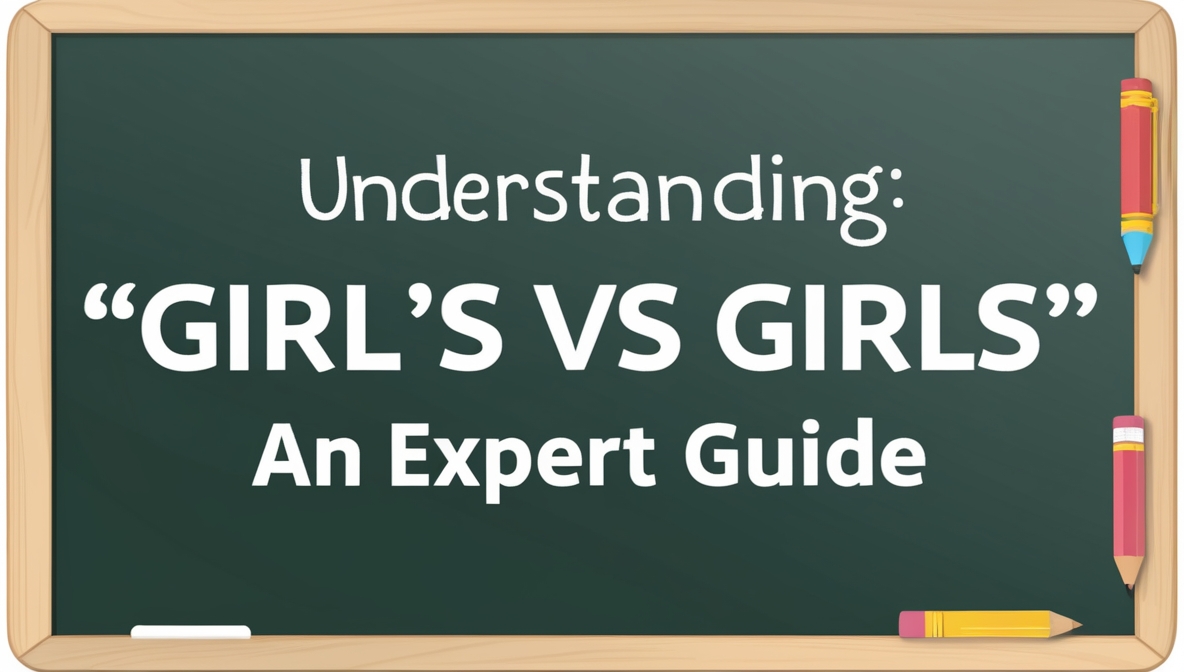In the realm of English grammar, certain words can often cause confusion among writers and speakers alike. One such pair is “girl’s” and “girls.” While they might sound similar, their meanings and usages differ significantly. This article aims to clarify these distinctions, providing you with a comprehensive understanding of each term.
What Does “Girl’s” Mean?
The term “girl’s” is a possessive noun. It indicates that something belongs to or is associated with a specific girl. The apostrophe plays a crucial role here; without it, the meaning shifts entirely.
Examples of “Girl’s” in Context
- Possession of an Item
- Scenario: Imagine a young girl named Emily who has a favorite toy.
- Sentence: Emily’s favorite toy is a stuffed unicorn.
- Here, “Emily’s” indicates that the toy belongs to Emily.
- Describing Characteristics
- Scenario: Consider a girl who excels in sports.
- Sentence: The girl’s determination helped her win the race.
- In this sentence, “girl’s” highlights the determination that is characteristic of her.
- Referring to Events or Activities
- Scenario: A birthday party is being planned.
- Sentence: We are celebrating the girl’s birthday next Saturday.
- This indicates that the birthday celebration is for a specific girl.
What Does “Girls” Mean?
On the other hand, “girls” is simply the plural form of the word “girl.” It refers to more than one girl and does not imply possession.
Examples of “Girls” in Context
- Describing a Group
- Scenario: A classroom filled with students.
- Sentence: The girls in the class are working on a group project.
- Here, “girls” refers to multiple girls collaborating together.
- Talking About Activities
- Scenario: A sports event where multiple girls are participating.
- Sentence: The girls played soccer all afternoon.
- In this case, “girls” describes the participants in the soccer game.
- Referring to General Behavior
- Scenario: Observing a group of friends interacting.
- Sentence: The girls laughed and shared stories over lunch.
- This indicates a general activity involving multiple girls.
Common Mistakes
Even seasoned writers can make mistakes when using “girl’s” and “girls.” One common error is using “girl’s” when referring to a group of girls. This mistake can lead to confusion and misinterpretation.
Example of a Common Mistake
- Incorrect: The girl’s are going to the movies tonight.
- Correct: The girls are going to the movies tonight.
In the incorrect sentence, the use of “girl’s” suggests possession, implying that something belongs to a girl, which doesn’t make sense in this context. The correct form, “girls,” clarifies that more than one girl is involved.
Tips for Remembering the Difference
To avoid confusion between “girl’s” and “girls,” consider these helpful tips:
- Think About Possession: If you are indicating that something belongs to a girl, use “girl’s.” If you are simply referring to multiple girls, use “girls.”
- Use Mnemonics: You might remember that “girl’s” has an apostrophe, like a girl’s belongings, while “girls” is just a straightforward plural.
- Read Aloud: Sometimes hearing the sentence can help clarify which form fits better. If the sentence sounds awkward, it might be a sign that you’re using the wrong term.
Practical Exercises
Exercise 1: Fill in the Blanks
Choose the correct form of the word to complete the sentences.
- The ___ (girl’s/girls) team won the championship.
- I love the ___ (girl’s/girls) friendship.
- The ___ (girl’s/girls) laughter filled the room.
Exercise 2: Correct the Sentences
Identify and correct the mistakes in the following sentences.
- The girl’s are playing in the park.
- I met the girl’s at the coffee shop.
- The girl’s soccer game was amazing.
Conclusion
Understanding the difference between “girl’s” and “girls” is essential for effective communication in English. By recognizing “girl’s” as the possessive form and “girls” as the plural noun, you can avoid common mistakes and enhance your writing skills.
Remember, mastery of these subtle distinctions not only improves your grammar but also enriches your ability to express ideas clearly. As you continue to practice, you’ll find that clarity in language fosters stronger connections with your audience.
So the next time you find yourself unsure about which form to use, just think about whether you are indicating possession or referring to multiple individuals. Happy writing!

